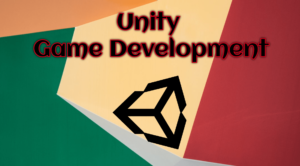As the gaming industry continues to grow, game developers are constantly seeking ways to create more visually stunning and immersive games. One of the most popular game engines for achieving this is Unity, which comes equipped with a wide range of advanced graphics techniques that can be used to enhance a game’s visuals. In this blog post, we’ll explore some of the most popular advanced graphics techniques in Unity, how to implement them, and tips for optimizing their performance. Whether you’re a seasoned game developer or just starting out, this guide will help you take your game’s graphics to the next level.
Contents
What Are AdvancedGraphicsTechniques in Unity?
Unity is a powerful game engine that comes packed with a variety of advanced graphics techniques to help developers create visually stunning games. These techniques can be used to enhance a game’s graphics in a variety of ways, from improving performance to creating more detailed and immersive environments.
What Are Some AdvancedGraphicsTechniques in Unity?
Some of the most popular advancedgraphicstechniques in Unity include:
- GPU Instancing: This technique allows for the rendering of large numbers of identical objects with a single draw call, improving performance and reducing memory usage.
- Dynamic Tessellation: This technique can be used to increase the level of detail in objects by subdividing their geometry at runtime.
- Screen Space Reflections: This technique adds reflections to a scene by reflecting objects off other objects in real time, creating more realistic and immersive environments.
- Volumetric Lighting: This technique adds a sense of depth and atmosphere to a scene by simulating light scattering through a medium such as fog or smoke.
How Do You Implement Advanced Graphics Techniques in Unity?
Implementing advancedgraphicstechniques in Unity requires a solid understanding of the engine’s rendering pipeline and scripting capabilities. Here are some general steps to follow:
- Research and Select Techniques: Determine which advanced graphics techniques are best suited for your game’s needs and performance requirements.
- Implement in Code: Implement the selected techniques using Unity’s scripting capabilities, such as C#.
- Test and Optimize: Test the implemented techniques in a variety of scenarios and optimize as needed to ensure that the game runs smoothly and without issues.
What Are Some Tips for Implementing Advanced Graphics Techniques in Unity?
Implementing advanced graphics techniques in Unity can be challenging, but there are a few tips to keep in mind:
- Start Small: Begin with one or two techniques at a time and build from there. Trying to implement too many techniques at once can lead to confusion and errors.
- Test Frequently: Test the implemented techniques frequently to catch any issues early and ensure that they are functioning as intended.
- Optimize for Performance: Keep performance in mind when implementing advanced graphics techniques, as they can often be resource-intensive.
Conclusion
Advanced graphics techniques in Unity can help take your game’s visuals to the next level, creating more immersive and engaging experiences for players. By researching and selecting the right techniques and following best practices for implementation and optimization, you can achieve stunning visuals that set your game apart from the rest.

